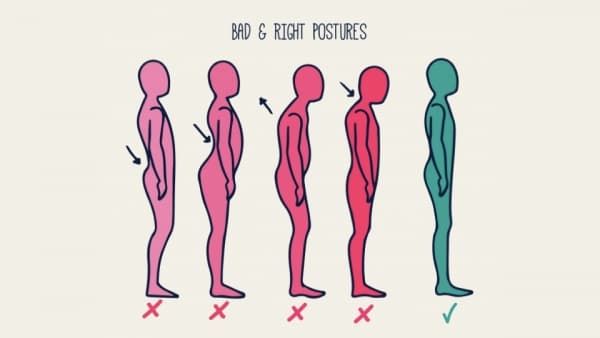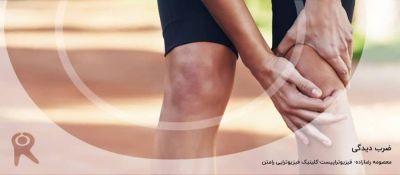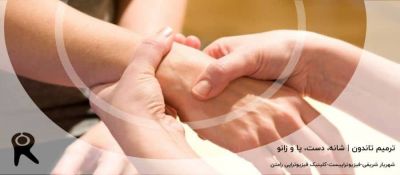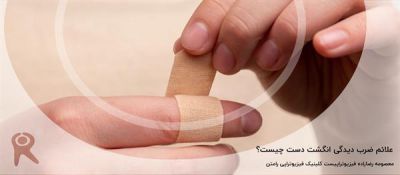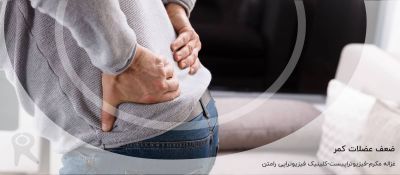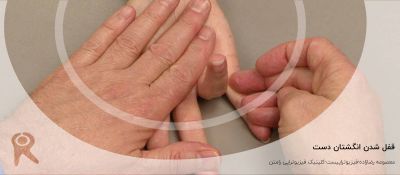Types of Postures
Posture are basically divided into two types:
- Inactive- These are postures or attitudes adopted for resting or sleeping. They require theoretically minimal muscle activity, and are usually assumed in need of relaxation.
- Active- The integrated action of many muscles is required to maintain active postures, they are basically divided in two types:
•
• Static postures- Body segments are aligned and maintained in a fixed positions. This is usually achieved by co-ordination and interaction of various muscle groups which are working statically to counteract gravity and other forces. Examples of static postures are standing, sitting, lying, and kneeling.
•
• Dynamic postures- In this type of posture body segments are moving. it is usually required to form an efficient basis for movement.Muscles and non-contractile structures have to work to adapt for changing circumstances. Examples are walking, running, jumping, throwing, and lifting.
Posture Assessment
In an ideal posture, the line of gravity should pass through specific points of body. This can simply be observed or using a plumb line. The line of gravity should pass through the external auditory meatus, then through the shoulder joint, then through the hip joint, approximately through greater trochanter of femur, then anterior to the knee joint and lastly anterior to lateral malleolus. When viewed from either the front or the back, the vertical line passing through the body's centre of gravity should theoretically bisect the body into two equal halves, with the body weight distributed evenly between the two feet.
In assessing posture, symmetry and rotations/tilts should be looked out for in the anterior, lateral and posterior views. Assess:
- Head alignment
- Cervical, thoracic and lumbar curvature
- Shoulder level symmetry
- Pelvic symmetry
- Hip, knee and ankle joints
Muscle action in posture
The balanced posture of the body reduces the work done by the muscles in maintaining it in an erect posture. It has been determined (using electromyography) that, in general:
- The intrinsic muscles of the feet are quiescent, because of the support provided by the ligaments.
- Soleus is constantly active because gravity tends to pull the body forward over the feet. Gastrocnemius and the deep posterior tibial muscles are less frequently active.
- Tibialis anterior is quiescent (unless high heels are being worn).
- Quadriceps and the Hamstrings are generally quiescent.
- Iliopsoas is constantly active.
- Gluteus maximus is quiescent.
- Gluteus medius and tensor fascia latae are active to counteract lateral postural sway.
- Erector spinae is active, counteracting gravity's pull forwards.
- The abdominal muscles remain quiescent, although the lower fibres of the Internal obliques are active in order to protect the inguinal canal.
Sitting Posture
In sitting:
- The ears should be aligned with the shoulders and the shoulders aligned with the hips
- The shoulders should be relaxed and elbows are close to the sides of the body
- The angle of the elbows, hips and knees is approximately 90 degrees
- The feet flat on the floor
- The forearms are parallel to the floor with wrists straight
- Feet should rest comfortably on a surface
Examples of different faulty postures
Some of the examples of faulty posture can be as follows:
- Lordotic posture- Lordosis refers to the normal inward curvature of the spine. When this curve is exaggerated it is usually referred to as hyperlordosis. The pelvis is usually tilted anteriorly.
- Sway Back Posture- In this type of posture, there is forward head, hyper-extension of the cervical spine, flexion of the thoracic spine, lumbar spine extension, posterior tilt of the pelvis, hip and knee hyper-extension and ankle slightly plantarflexed.
- Flat back posture- In this type of posture, there is forward head, extension of the cervical spine, extension of the thoracic spine, loss of lumbar lordosis and posterior pelvic tilt.
- Forward head posture
- Scoliosis
- Kyphosis

